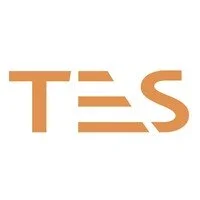Network Rail Leaning Structures
Upgrading critical railway infrastructure for enhanced reliability and safety is a cornerstone of modern rail development. Our extensive project on the Anglia Route, known as "NWR Leaning Structures," showcases TES's comprehensive capabilities in Overhead Line (OHL) renewal, navigating complex site conditions and delivering essential upgrades for Network Rail.
The Challenge: Addressing Deterioration and Embankment Instability
The Anglia Route, like many parts of the national network, faces inherent challenges, particularly concerning embankment stability. Prior to TES's involvement, various sites were identified as having poor embankment conditions, characterised by high peat concentrations and significant soil moisture deficits in clay bank areas. These issues led to substantial ground movement and deterioration of existing assets, necessitating urgent renewal.
The equipment slated for replacement consisted of the ageing Mark One (MK1) auto-tensioned simple equipment design, which included components such as tied anchor and balance weight structures, bolted base masts, and standard pull-off/push-off assemblies from the MK1 range. The return conductor and bare feeder, made of 19/4.22 aluminium, also required upgrading.
TES 2000's Comprehensive Approach: Design to Handover
TES was contracted by Network Rail to deliver a full package of P-way works for this extensive OHL renewal. Our responsibilities spanned from initial design validation to final handover, encompassing:
Design & Construction: Design and construction of new foundations, along with the installation of robust steel cylindrical piles to support the new Overhead Line structures.
Strategic Coordination: Leading the validation of all design aspects within the project scope, and spearheading the coordination and deconfliction of all works within the possession periods. This involved close liaison with sub-contractors and meticulous management of all possession and isolation planning arrangements.
Material & Equipment Management: Procurement of new materials, the fabrication and precise installation of all new OHL equipment, and the careful recovery of existing Network Rail assets.
Quality Assurance: Comprehensive height and stagger surveys of the new OHL equipment, thorough snagging, and a meticulously managed hand-back process to Network Rail’s maintenance organisation. This included the completion of all red-line drawings and necessary documentation to ensure full compliance with NR standards.
Over the course of the project, our work resulted in the replacement of 55 structures, including 2 balance weight anchors, 1 booster overlap, 3 standard overlaps, and 49 Single Track Cantilevers (STCs), alongside various modifications to existing Network Rail assets.
Navigating Complexity: Planning, Adaptation, and Collaboration
This project presented considerable challenges, notably initial delays caused by design changes and complex possession access issues. These delays often stemmed from Network Rail’s requirements for additional design modifications in response to unforeseen site conditions and evolving safety considerations. This dynamic environment necessitated frequent revisions to the work plan, including the cancellation and resubmission of work requests on multiple occasions.
To manage these complexities effectively, TES implemented a highly collaborative approach:
Dedicated Team: A committed project team was allocated, comprising 4-6 members from Project Management and a similar-sized Commercial team, alongside specialist roles: a Contractors Responsible Engineer (CRE), OHL Construction Manager, OHL Supervisor, Overhead Linesmen, Isolation Planner, Possession Planner, Nominated Person, and Authorised Person. This multidisciplinary team worked seamlessly to ensure smooth project delivery.
Proactive Coordination: Our dedicated OHL construction team and management were responsible for all aspects of project delivery. Weekly "whiteboard meetings" were conducted with Network Rail to confirm and detail access arrangements and work content for the planned weekend works. These meetings were instrumental in coordinating and deconflicting works up to five weeks in advance, ensuring plans could be locked down to minimise last-minute changes. All aspects, including possession details, worksite limits, isolation boundaries, and access/egress for plant and machinery, were thoroughly reviewed.
TES also maintains full responsibility and accountability under the CDM 2015 regulations, ensuring all key management staff are qualified and hold the required competencies to undertake this specialised work. A comprehensive Work Package Plan (WPP) was developed, along with associated risk assessments covering all activities and their respective control measures.
Delivering Enhanced Reliability on the Anglia Route
The "NWR Leaning Structures" project, stands as a testament to TES's expertise in large-scale OHL renewals. Our ability to manage significant technical challenges, adapt to evolving requirements, and coordinate complex operations ensures that critical infrastructure upgrades are delivered safely, efficiently, and to the highest industry standards for clients like Network Rail.
